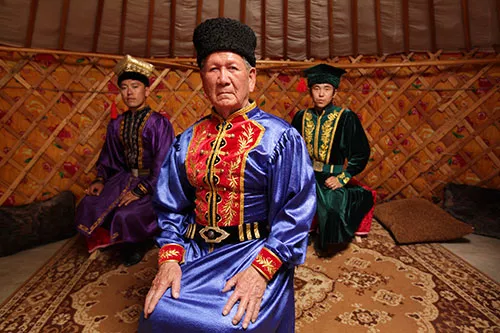
Altyn Basanov, age 91, a Kalmyk emigrant to France returning to visit his homeland, with Dmitriy Sergejevich Sharayev (left) and an unidentified musician near Elista, Kalmykia. Photo by Chris Rainier.
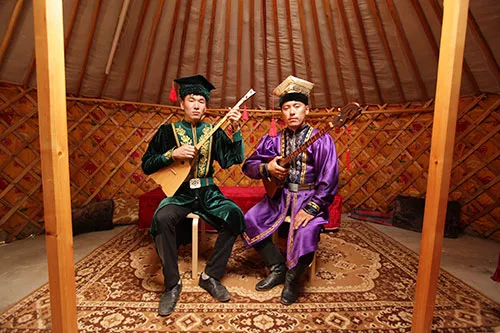
Viktor Batyrovich Okchayev and Dmitriy Sergejevich Sharayev near Elista, Kalmykia. Photo by Chris Rainier.
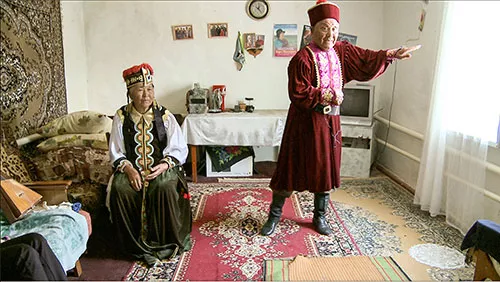
Nyamin Songajieyavich Manjieyev and Nina Kochayevna Manjieyeva perform a traditional song at their home in Komsomolsky, Kalmykia. Photo by Jeremy Fahringer.
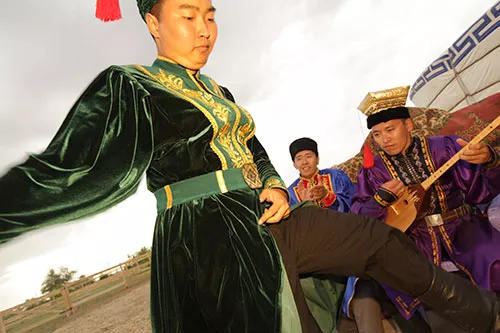
Itkl, a collective of Kalmyk youth for the propagandizing of Kalmyk culture and language. Photo by Chris Rainier.

A dancer advertises at the tea festival in Elista. Photo by Chris Rainier.
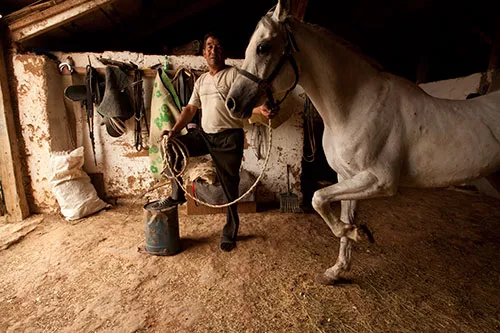
Umamdzhi Goryayevich Goniyev, born 1963, trains horses outside of Yashkul', Kalmykia. Photo by Chris Rainier.
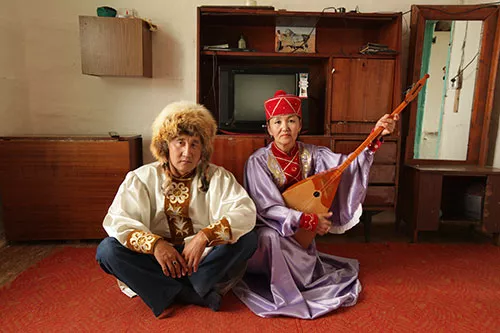
Badma Khalgayevich Tsebikov and Svetlana Tsabdidovich Dzhamchinova, near Yashkul', Kalmykia. Photo by Chris Rainier.

The Enduring Voices team (from left: Jeremy Fahringer, Gregory Anderson, K. David Harrison) interviews Badma Khalgayevich Tsebikov about Kalmyk horse customs in Yashkul', Kalmykia. Photo by Oliver Anderson.

A Kalmyk fox hat and topshur (dombura). Photo by Oliver Anderson.
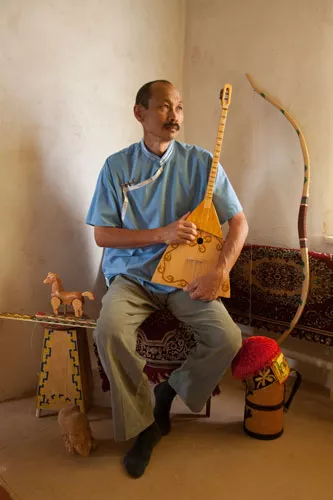
Shard Nigryan Nasanka, an expert wood carver and instrument maker, in Yashkul’, Kalmykia. Photo by Chris Rainier.
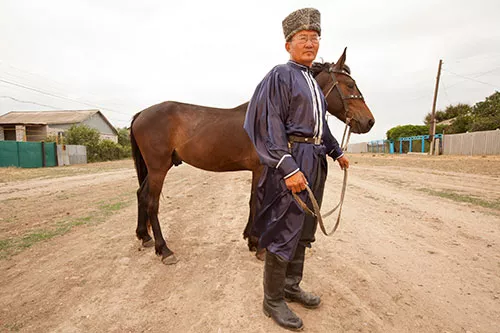
Dorzhi Nandushov, a master horseman, in Ketchenery, Kalmykia. Photo by Chris Rainier.
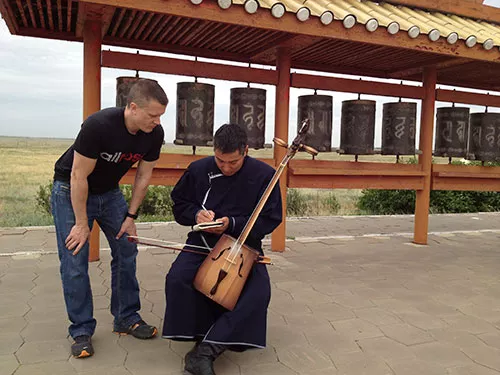
David Harrison consults with Buxin Bembin Gaavan Baatr about Kalmyk musical terms, near Elista, Kalmykia. Photo by Jeremy Fahringer.
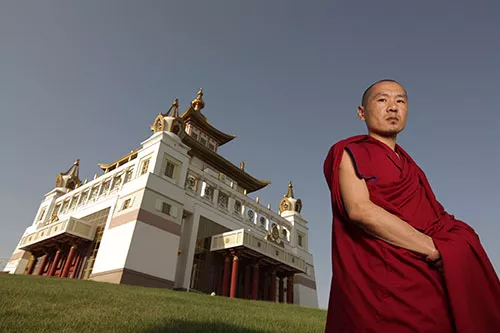
Anja-Gelung at the 'Golden Abode of Buddha Shakyamuni' temple in Elista, Kalmykia. Photo by Chris Rainier.
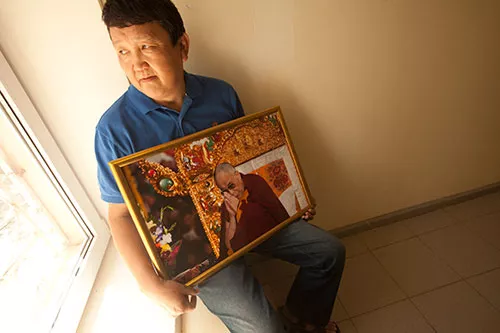
Gary Lidzeyev, photographer, holds his favorite image of the Dalai Lama. Lidzeyev travels around the world photographing Buddhist traditions. Elista, Kalmykia. Photo by Chris Rainier.
Altyn Basanov, age 91, a Kalmyk emigrant to France returning to visit his homeland, with Dmitriy Sergejevich Sharayev (left) and an unidentified musician near Elista, Kalmykia. Photo by Chris Rainier.



